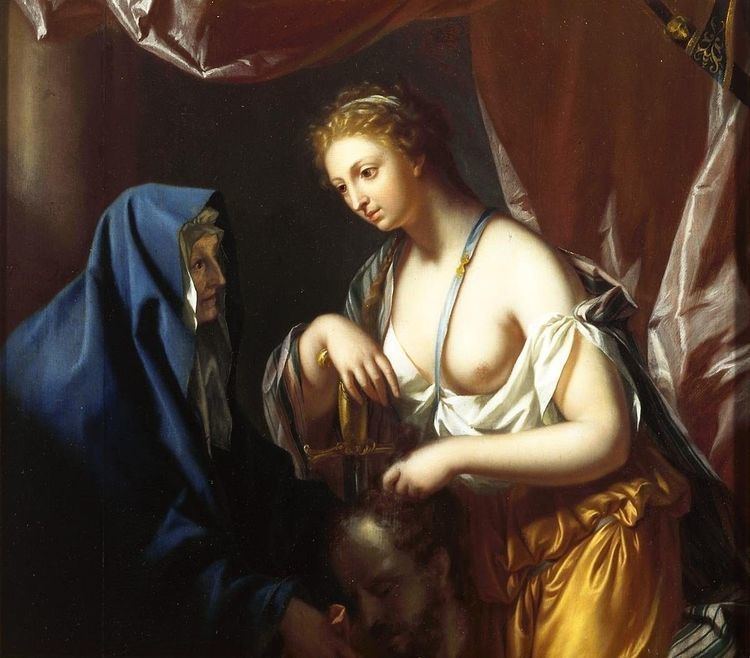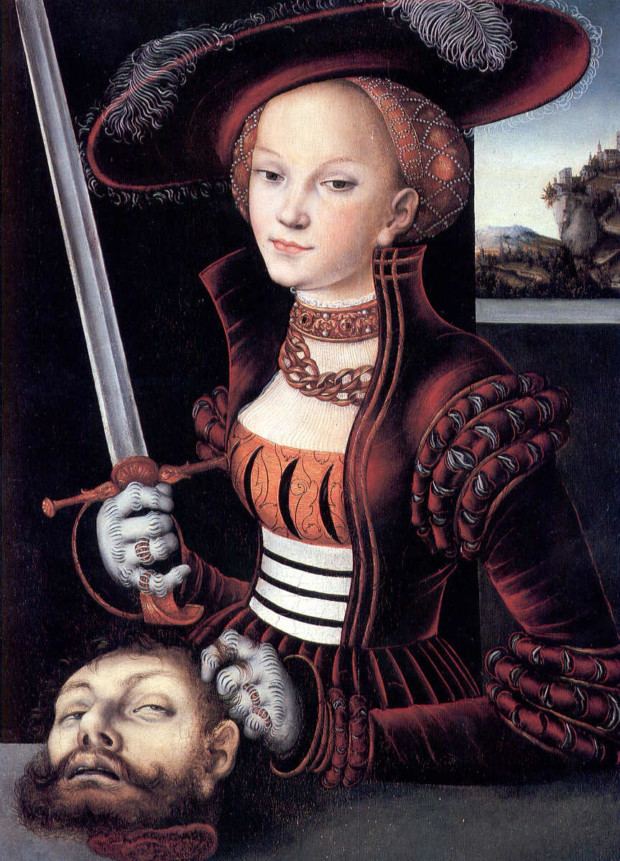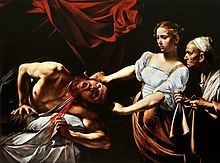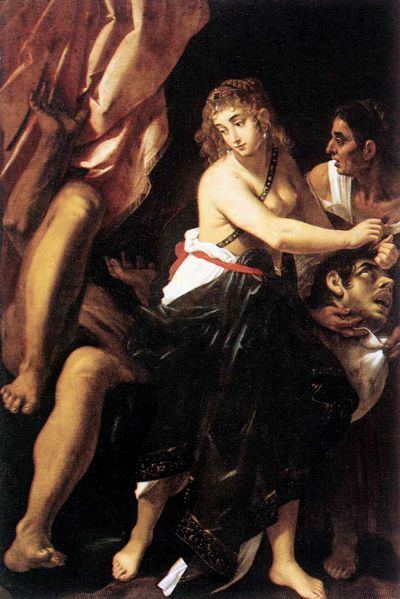 | ||
Similar Judith, Artemisia Gentileschi, Caravaggio, Orazio Gentileschi, Lucas Cranach the Elder | ||
Gentileschi judith and holofernes
In the deuterocanonical Book of Judith, Holofernes (Greek: Ὀλοφέρνης; Hebrew הולופרנס) is an invading general of Nebuchadnezzar. Nebuchadnezzar dispatched Holofernes to take vengeance on the nations of the west that had withheld their assistance to his reign. Holofernes occupied all the nations along the sea coast and destroyed all the gods of the nations, so that all nations would worship Nebuchadnezzar alone. Holofernes was warned by Achior, the leader of the children of Ammon, against attacking the Jewish people. Holofernes and his followers were angered by Achior. They rebuked him, insisting that there was no god other than Nebuchadnezzar.
Contents

The general laid siege to Bethulia, commonly believed to be Meselieh, and the city almost surrendered. Holofernes's advance stopped the water supply to Bethulia. The people lost heart and encouraged Ozias and their rulers to give way. The leaders vowed to surrender if no help arrived within five days.

Bethulia was saved by Judith, a beautiful Hebrew widow who entered Holofernes's camp and seduced him. Judith then beheaded Holofernes while he was drunk. She returned to Bethulia with the severed head, and the Hebrews defeated the enemy. Hebrew versions of the tale in the Megillat Antiochus and the Chronicles of Jerahmeel identify "Holoferenes" as Nicanor whence the name "Holofernes" in the Greek version would be a deliberately cryptic name similar to the use of "Nebuchadnezzar" for Antiochus.

Holofernes is depicted in Geoffrey Chaucer's The Monk's Tale in The Canterbury Tales, and in Dante's Purgatorio (where Holofernes is to be found on the Terrace of Pride as an example of "pride cast down", XII.58-60). As a painter's subject it offers the chance to contrast the flesh and jewels of a beautiful, festively attired woman with the grisly victim, a deuterocanonical parallel to the Yael sequence in the Hebrew Bible, as well as the New Testament vignette of Salome with the head of John the Baptist.

Judith holofernes der letzte optimist offizielles video


